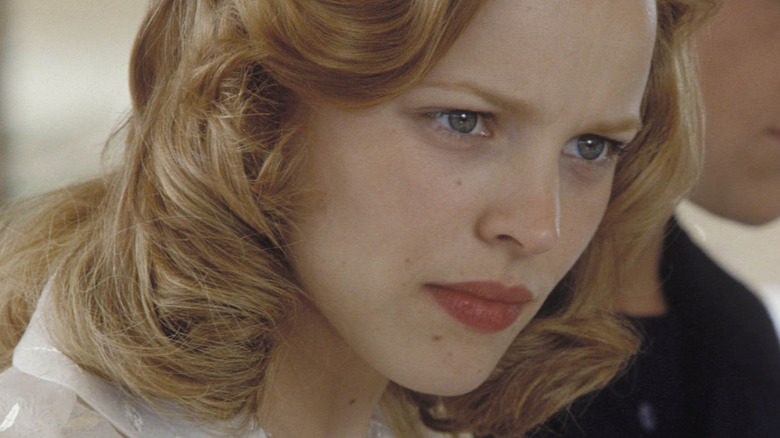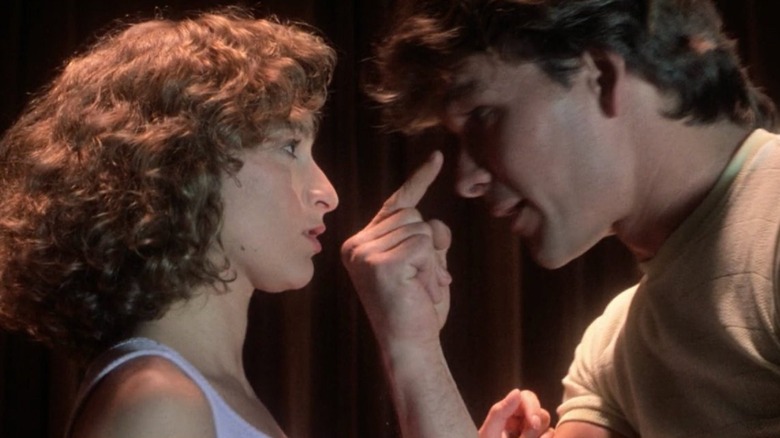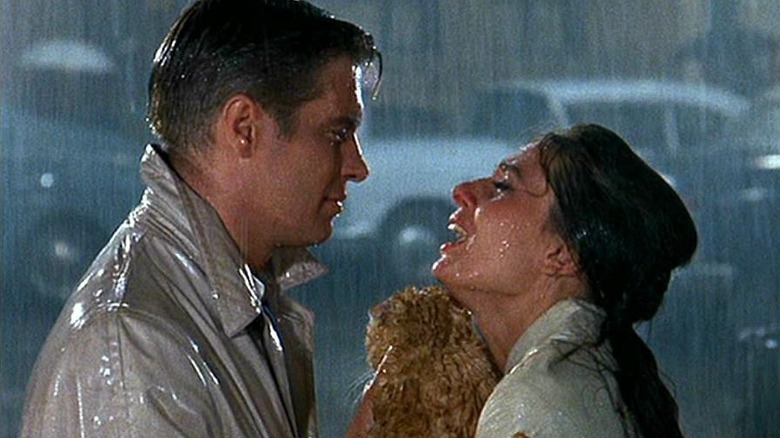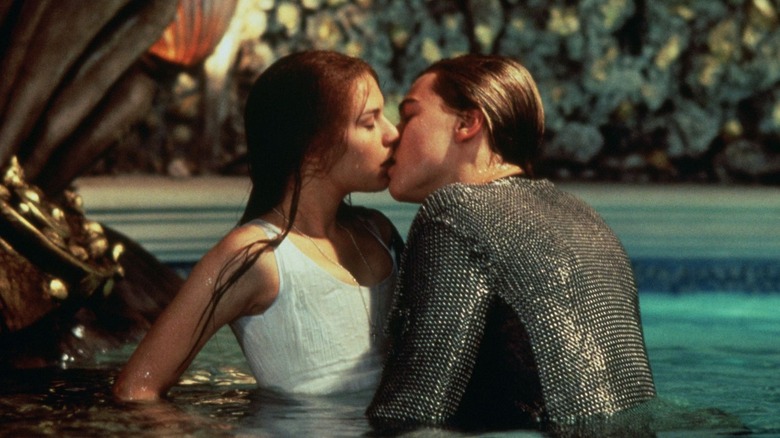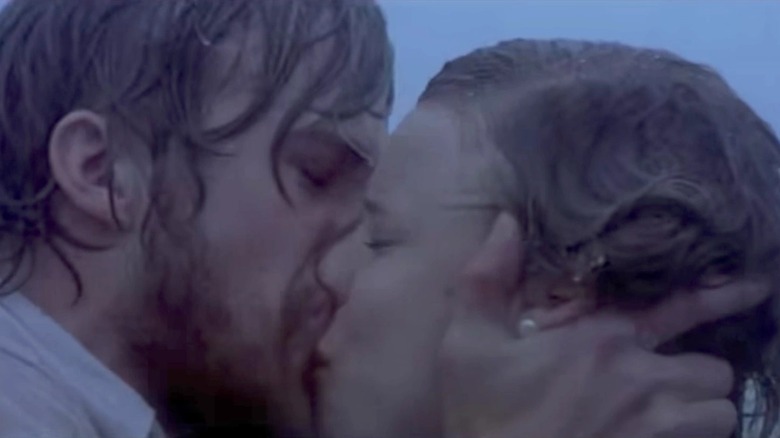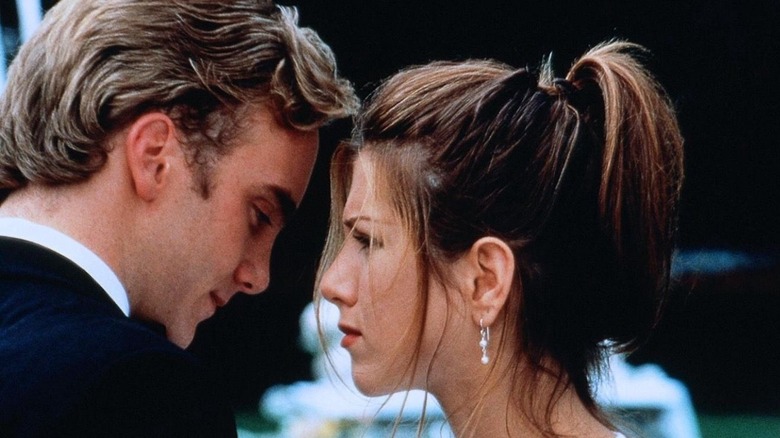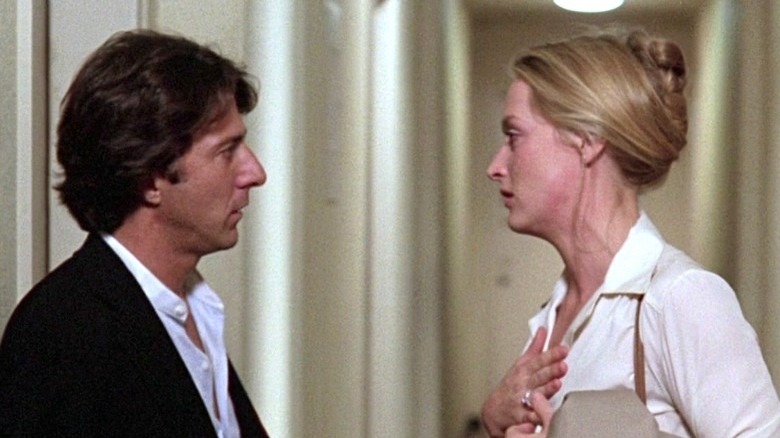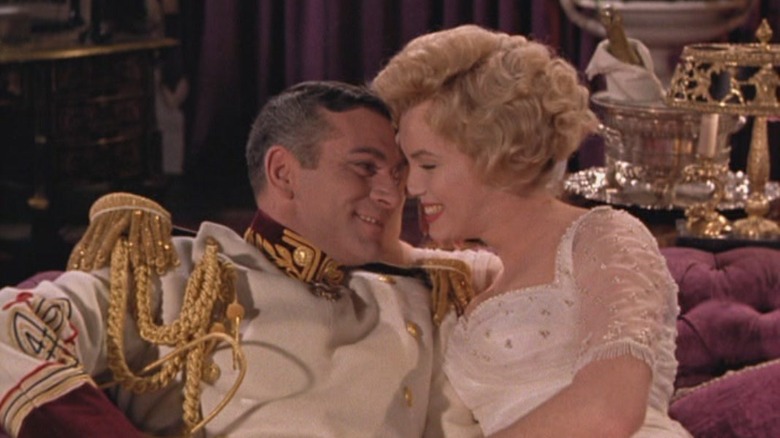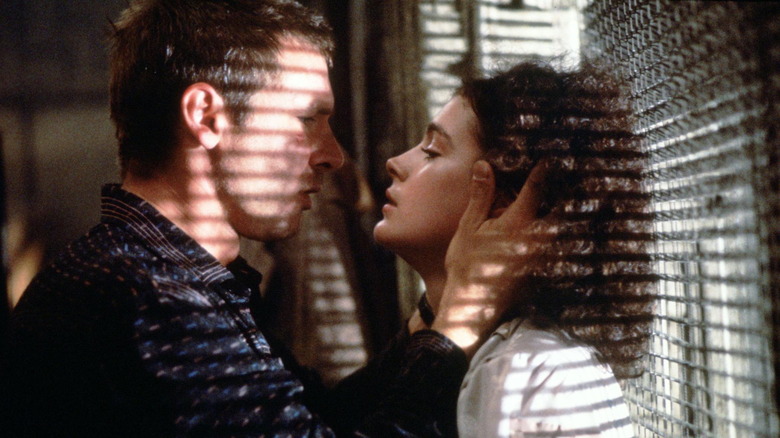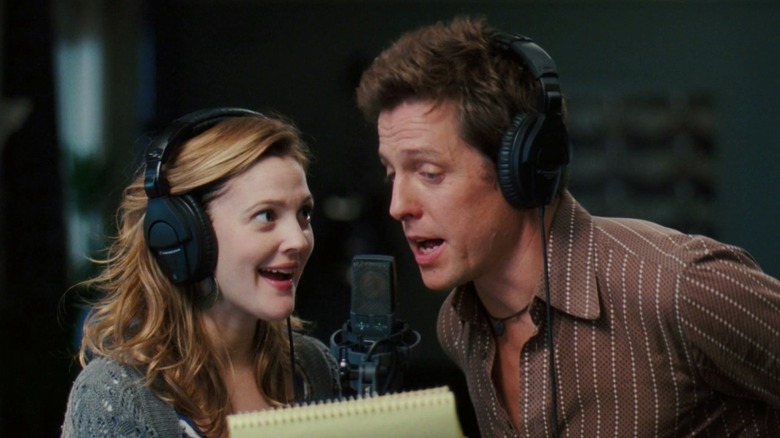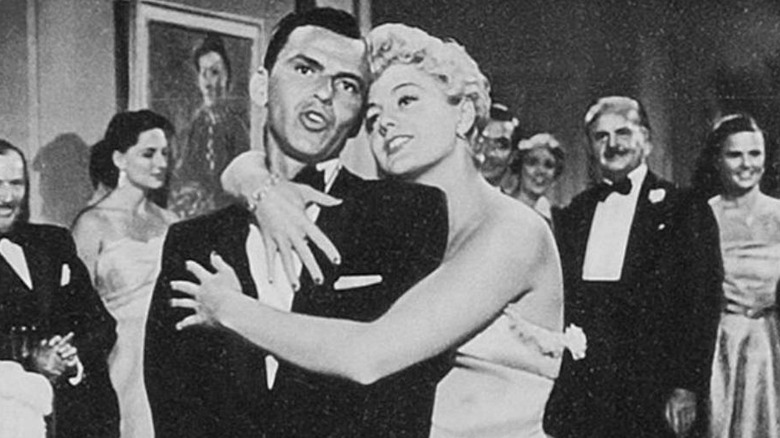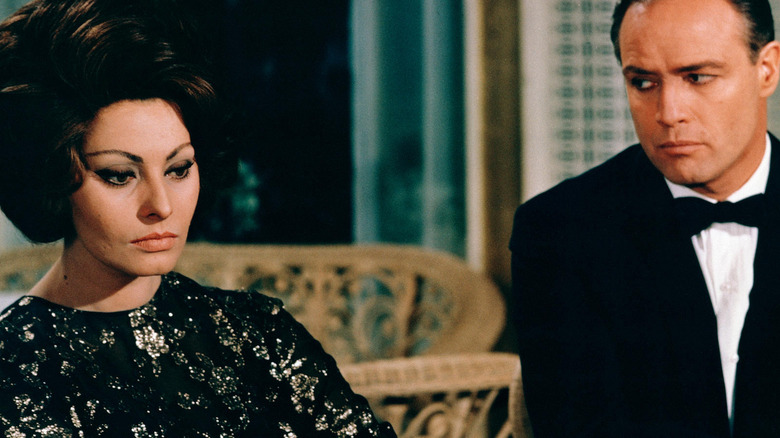Movie Couples Who Couldn't Stand Each Other In Real Life
Whenever movie fans fall in love with a love story, we want to believe that the actors making us feel those warm and mushy feelings are at least friends. But just because a couple sizzles on screen doesn't mean that chemistry translates off camera.
The truth about Hollywood romance is that it's less magical and more mechanical. Do these actors look good together? Do they click? Are they both free on the shooting dates, and willing to accept the salary the studio has settled on? None of these factors necessarily add up to a good working relationship, let alone anything else.
Jennifer Grey and Patrick Swayze — who, spoiler alert, are on this list — made one of the most compelling love stories of all time in "Dirty Dancing." Yet the pair struggled to work together, and Grey said that she didn't expect them to have any chemistry when they did a screen test. "It's a weird thing ... It doesn't have to do with whether you like someone or not. It's just you either have it or you don't," she told Glamour.
Some of the couples on this list pushed through tension to convincingly fake romance. Some couldn't even manage that. From the star-crossed lovers who were just cross, to the superstar who let her rookie co-star know she didn't want to work with him, and the rom-com favorite who's on all his co-stars' grudge lists, these are the movie couples who couldn't stand each other after "Cut!"
Jennifer Grey and Patrick Swayze's dynamic was more messy than Dirty
Naive daddy's girl Baby (Jennifer Grey) and macho dancer Johnny (Patrick Swayze) are not immediately in sync when they meet in "Dirty Dancing." She thinks he's rude, he thinks she's immature.
This matched the tone of the relationship between stars Grey and Swayze offscreen. Swayze later told the American Film Institute (AFI) that much of the training montage — showing Baby alternately bursting into laughter or crying with frustration, while Johnny gets increasingly irritated — was taken from sessions in which trained dancer Swayze really was trying to teach novice Grey the moves. Grey later described their relationship on the "Dirty Dancing" set as "a very complex dynamic."
It didn't help that the two had previously spent eight weeks in a military training camp, preparing for the World War III movie "Red Dawn." Grey felt Swayze took his group leader role too seriously, ordering everyone else around. When she was cast in "Dirty Dancing," she secretly hoped he wouldn't get the part of Johnny.
However, the two ultimately found a level of professional respect. Grey appreciated that Swayze promised he would protect her, which helped the nervous actress through their big lifts. And to AFI, Swayze described Grey as "one of the most gifted actresses around in terms of her ability to be present in the moment," adding, "That's what made ... her character really, really special."
This Breakfast at Tiffany's romance was stale behind the scenes
In "Breakfast at Tiffany's," the relationship between the two metaphorical drifters Holly Golightly (Audrey Hepburn) and Paul Varjak/Fred (George Peppard) sparkles like the diamonds inside the iconic jewelry store.
But offscreen, Hepburn found Peppard "pompous," according to the movie's co-producer Richard Shepherd. He recalled, "There wasn't a human being that Audrey Hepburn didn't have a kind word for, except George Peppard." For his part, Peppard dismissed Hepburn as uptight and prudish, calling her "the Happy Nun."
While Hepburn has become a beloved pop culture icon — partly for her acting and partly for her work as a UNICEF Goodwill Ambassador – she wasn't the first or last collaborator to dislike Peppard.
As the "Breakfast at Tiffany's" shoot continued, Peppard constantly tried to make his character, not Hepburn's, the center of the movie. He refused to take directions that he thought made Paul unlikeable, and almost came to blows with director Blake Edwards. Peppard's antics also saw him fall out with former friend Patricia Neal, who played what we'd today call his Sugar Mommy.
Decades later, Peppard's manners had not improved. While starring in "The A-Team," he and co-star Mr. T stopped speaking to each other off camera, and he told various actresses who were added to the all-male cast that no one wanted them on set because the men felt the show didn't need any women.
The star-crossed unlovers of Romeo + Juliet
"The course of true love never did run smooth," as Shakespeare quipped in "A Midsummer Night's Dream." Neither did the relationship between two actors bringing one of his other plays to the screen.
Claire Danes was only 17 when she appeared in Baz Luhrman's 1996 Shakespeare update "Romeo + Juliet." Her co-star Leonardo DiCaprio was 21. However, Danes was said to be put off by what she saw as DiCaprio's immaturity, particularly the pranks he would pull on the cast and crew. They ignored each other in between takes.
DiCaprio maintained his prankster reputation after moving on to play a now-equally famous star-crossed lover. While playing Jack Dawson in "Titanic," he and co-star Kate Winslet bonded over pranks. As fellow "Titanic" alumnus Billy Zane put it, "If he wasn't rolling back his eyelids, he was making objets d'art out of bodily fluids."
While Winslet found this hilarious, Danes had had enough after the "Romeo" shoot ended. She was approached to star in "Titanic" opposite DiCaprio, but turned the part down. She later said she wasn't ready for the attention such a big project would bring.
There may have been more to those awkward silences than hatred. Miriam Margoyles, who played Juliet's nurse, has claimed that Danes had a big crush on her older co-star, who handled it insensitively and tried to "get away" from her.
Less The Notebook, more like the Burn Book
Although it takes a World War and broken engagement for the central couple in "The Notebook" to get together for good, the sparks between Noah (Ryan Gosling) and Allie (Rachel McAdams) are immediate. Unlike their characters, it took years for the actors to fully warm up to each other.
Neither McAdams nor Gosling were the studio's first choices for their roles. Their chemistry helped them land the parts, but it didn't guarantee an easy shoot.
Director Nick Cassavetes recalled that while they were shooting a big scene with lots of extras, Gosling asked him to have a different actress stand out of shot and read McAdams' lines, saying, "I'm just not getting anything from this." Cassavetes ultimately pushed the pair to resolve their conflict for the sake of the shoot — by letting them air their respective issues in a shouting match. "The rest of the film wasn't smooth sailing, but it was smoother sailing," he admitted.
"The Notebook" came out in summer 2004 and became an instant classic. By 2005, Gosling and McAdams weren't just on speaking terms: They were officially dating for real. That year, they won the MTV Movie Award for Best Onscreen Kiss, for the rain-drenched moment in "The Notebook." The couple recreated it on stage — minus the rain — to much delight.
Gosling's and McAdams' romance ended in 2007, but it sounded somewhat stormy to the end. Gosling told GQ (via People), "We both went down swingin' and we called it a draw."
Jay Mohr and Jennifer Aniston were not friends
Imagine landing the lead role — your first — in a romantic comedy, opposite one of the most famous actresses of the moment. Then you get to set and find out — from her — that she didn't want you to get the job.
Jay Mohr lived that fun-sounding scenario in real life, when he was cast alongside Jennifer Aniston in 1997's "Picture Perfect." On an episode of his podcast Mohr Stories, Mohr recalled on his "Mohr Stories" podcast that the first scene he and Aniston had to shoot together involved them making out. His first encounter with Aniston that day was when she walked past him with director Glenn Gordon Caron. According to Mohr, Aniston said to Caron, "Six guys they screen test," and held up six fingers, then pointed to Mohr. She added, "The one f***ing guy I hate, that's the guy they hire. Him!" The issue may have been that one of those other guys was Aniston's then-boyfriend, Tate Donovan.
Mohr said this animosity continued for the rest of the shoot. He told Elle that Aniston would audibly complain about him to the other actors in between takes. "Jennifer Aniston was so f***ing mean to me that ... I drove to New Jersey ... I put my head in my mother's lap, and I f***ing cried," he said.
Hoffman vs Streep was not as entertaining
Just because you're playing soon-to-be exes doesn't mean you have to treat your co-star with ex-level hostility. Dustin Hoffman took his notorious character immersion too far while filming divorce drama "Kramer vs. Kramer," when he used real-life bullying tactics to try to intimidate Meryl Streep, who was playing his onscreen ex-wife.
Hoffman and Streep got off to a bad start when they met, at her audition for a Broadway play he was directing. Whatever exactly happened, Hoffman apologized and Streep "accepted that." But the real trouble started when the two were making "Kramer vs. Kramer" together.
Hoffman repeatedly made comments about Streep's boyfriend John Cazale, who had recently died from lung cancer. He shouted at her when she requested changes to the script. In a scene in which the couple is fighting in an Italian restaurant, he shocked Streep by suddenly throwing a wine glass against the wall. In another fight scene, he spontaneously slapped her around the face, leaving red marks. Streep held it together in the moment, and the take didn't make the final cut, but she later said that Hoffman "was overstepping."
Hoffman has acknowledged that he was venting emotions brought about by the real-life divorce he was going through during the shoot. This weak explanation wasn't helped when, in 2017, as KQED reports, multiple women accused him of sexual assault and harassment (accusations he denies).
Laurence Olivier was infuriated by no-show-girl Marilyn Monroe
Renowned actor and director Laurence Olivier was initially excited to work with superstar Marilyn Monroe on 1957's "The Prince and the Showgirl." He would be directing and starring opposite the actress, who was fast becoming the most in-demand woman in Hollywood. He was initially charmed by her too. "When I first met her, I thought she was the most enchanting thing I'd ever met in my life ... I thought she was such a witty actress, as well as being so ravishingly lovely," Olivier later told an interviewer.
Monroe certainly had a remarkable quality on screen: not just in the way she looked, but in her comic timing. Directors were keen to use that magic and the star power it afforded her to boost their projects. But the price they paid was putting up with Monroe's maddening habits.
She was often late, which held up the shoot. Whereas Olivier was trying to make a straightforward comedy, Monroe, following the guidance she'd been given at the Actor's Studio in New York, insisted on being given a more intellectual meaning for each line. Olivier condescendingly said her natural gift was ruined by people "giving her all sorts of intellectual ideas she simply couldn't cope with."
Monroe didn't care for her co-star/director either. She blamed him for her lateness, saying, "If you don't respect your artists, they can't work well. Respect is what you have to fight for."
The knives came out in Blade Runner
When Hollywood newcomer Sean Young was cast in sci-fi epic "Blade Runner," she hoped that her co-star Harrison Ford would support her. Ford was already a household name, thanks to the first two "Star Wars" movies and the original "Indiana Jones" movie.
Young was especially looking for guidance during the pair's love scene. However, she later recalled, "Harrison wasn't particularly generous that way." The scene between Young's replicant Rachael and Ford's replicant-hunter Rick Deckard was so violent that the crew referred to it as "the hate scene."
It wasn't just Ford that Young took issue with on the "Blade Runner" set. She told the Daily Beast that director Ridley Scott deliberately shot the sex scene in a way that heightened Young's discomfort, because she'd rejected his advances. "I think it was Ridley's none-too-subtle message that he was getting even with me," she said. The bad blood came to the fore again in 2017, when Young's part in the sequel, "Blade Runner 2049," was limited to a 30-second appearance as a hologram. However, her son Quinn did get to work on the film's visual arts.
Hugh Grant doesn't actually love any of his co-stars
Despite spending much of the late '90s and early '00s as the go-to charmingly bumbling rom-com hero, there's no love lost between Hugh Grant and most of his co-stars. Grant himself freely admitted on "Watch What Happens Live" (via Us): "I'm a nasty piece of work and I think people should know that."
Grant's self-awareness about his real-life negative effect on women potentially peaked in an interview with Elle in 2009. Asked to give three adjectives about several of his former co-stars, he said that Julianne Moore ("Nine Months"), Rachel Weisz ("About a Boy") and Drew Barrymore ("Music and Lyrics") loathe, despise and hate him respectively. Grant added another name to that list in 2015 on "Watch What Happens Live." He reflected that Julia Roberts might also hate him, because "I've probably made too many jokes about the size of her mouth."
At least one person appears to have forgiven Grant's rudeness. Although Grant made Barrymore cry on the set of "Music and Lyrics" – because she "gave me notes," he later explained — he guested on her talk show in 2021. During the segment, they revealed that around 10 years earlier, a few years after the movie had come out, they accidentally made out in a New York restaurant. Not a totally hopeless situation then.
Seth Rogen wasn't happy when Katherine Heigl knocked their movie
Seth Rogen and Katherine Heigl got on well during the filming of their unplanned-pregnancy comedy "Knocked Up." Rogen even said on a 2016 edition of "The Howard Stern Show" (via USA Today), "As we were making the movie, honestly, I was like, 'I would make a dozen movies with her.'"
Heigl had a slightly different but generally positive take. Her problem wasn't with Rogen, but with aspects of the character she was playing: an uptight career-driven reporter who gets pregnant after a one night stand with a slacker played by Rogen. Heigl told Vanity Fair that she disliked that the movie "paints the women as shrews, as humorless and uptight, and it paints the men as lovable, goofy, fun-loving guys." She added that "Knocked Up" was "a little sexist." In a People interview, she clarified that it was still the "best filming experience of my career."
If this happened today, Heigl's comments might be praised, at least by some. In 2008, however, she was branded as ungrateful, rude and difficult. Rogen described her comments as crazy, and said he was disappointed not to get an apology — although Heigl had publicly apologized and attempted to explain herself.
In 2016, Heigl said again that she regretted the comments during an interview with Howard Stern, and that she would work with Rogen, if he wanted to work with her. A few months later, Rogen appeared on the show and said he didn't hold a grudge anymore. "Knocked Up 2: High School," anyone?
Shelley Winters wished she hadn't met Frank Sinatra
In October 1944, Frank Sinatra inadvertently started a riot at New York's Paramount Theatre just by showing up on stage. Thousands of screaming teenage fans crushed into the venue to hear him sing. Meanwhile, the list of women he supposedly had romances with included Ava Gardner, Lana Turner and Mia Farrow. But one woman was completely unmoved by Sinatra's charms: his co-star in the 1952 flop, "Meet Danny Wilson."
Sinatra played the nightclub singer of the title — not too much of a stretch — who ends up in a love triangle, vying for the affections of another singer, Joy (Shelley Winters), opposite his piano player, Mike (Alex Nicol). Joy ultimately chooses Mike, an ending Winters described scathingly as "very tough for Frank."
The Oscar-winning Winters was no shrinking violet. Her own list of lovers rivaled Sinatra's in length and celebrity: It included Errol Flynn, Marlon Brando, Sean Connery and Burt Lancaster.
Given their similar temperaments, perhaps it's not surprising that the two actors clashed repeatedly on set. After one long night shoot, they had a big fight. Sinatra called Winters a "bowlegged b***h of a Brooklyn blonde," and she responded with "Skinny, no-talent stupid Hoboken b***ard" — and punched him. "I thought his make-up man was gonna shoot me ... but he got in his limousine and went away," Winters recalled.
Sophia Loren found Marlon Brando all bark and a little bite
In addition to his acting career and activism, Marlon Brando is famous for being promiscuous and a demanding colleague. Sophia Loren found both of these latter traits to be true when the pair worked together on 1967's "A Countess from Hong Kong."
In her autobiography, Loren claimed that during filming, Brando suddenly "put his hands on me." She said that she responded by calmly turning around, blowing in his face, and telling him, "Don't you ever dare to do that again."
Brando backed down, but Loren says that after this incident, he became uncooperative. He reportedly claimed that she had bad breath, and right before shooting a kissing scene, whispered to her that he could see her nose hairs. During the third take of the scene, he even allegedly bit her lip.
Despite these difficulties, Loren dismissed Brando as more bark than, well, bite. She said that the moment she stood up to him when he grabbed her, "he seemed small, defenseless, almost a victim of his own notoriety." When director Charlie Chaplin scolded Brando for his lateness to set, Brando's already "very small voice ... went away."
